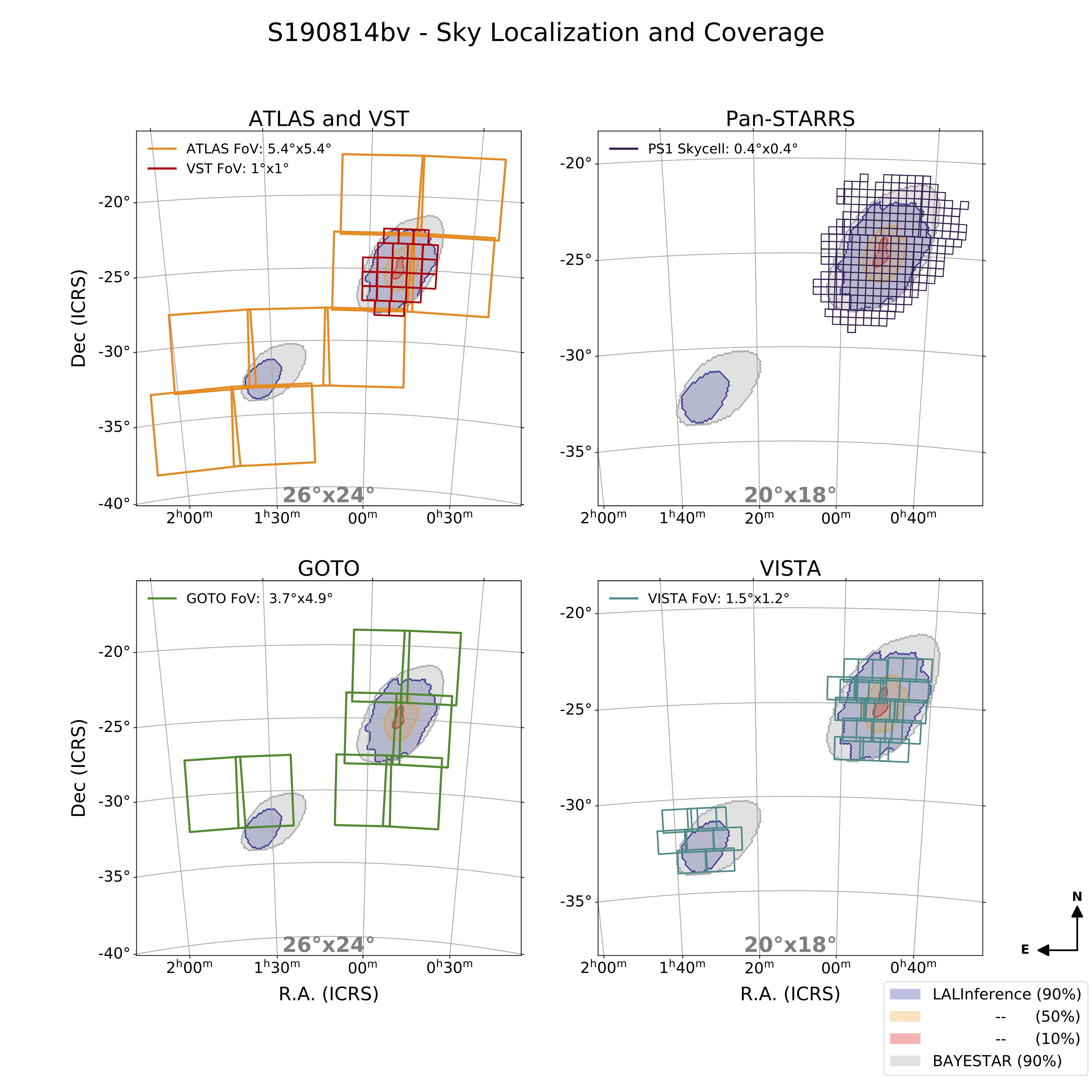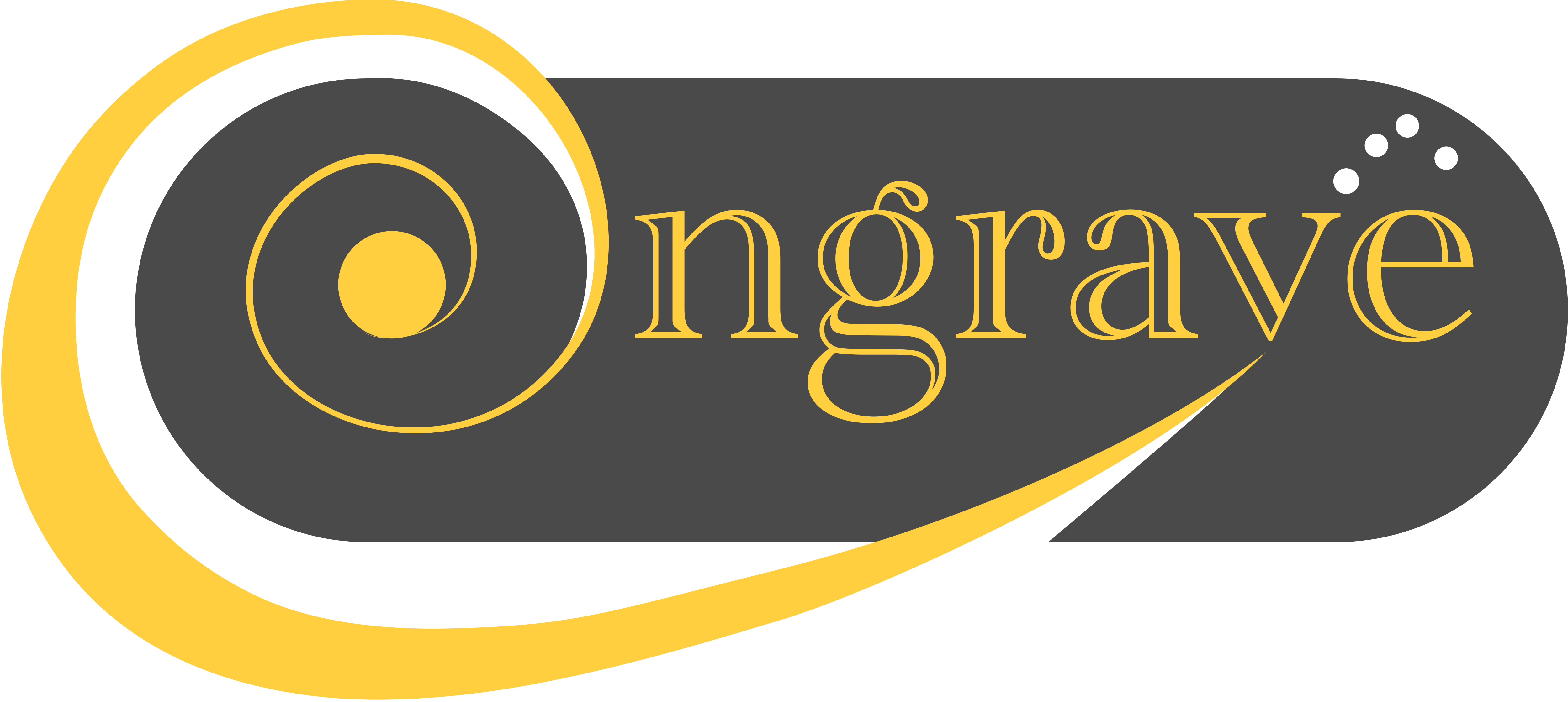
The needle and the haystack
No firm electromagnetic counterpart of the first black hole / neutron star merger has been found by ENGRAVE. But the hunt continues!
On February 7th, 2020, the ENGRAVE collaboration released results (https://arxiv.org/abs/2002.01950) on the first black hole / neutron star merger identified by the LIGO and VIRGO gravitational wave detectors, suggesting that there was no detectable electromagnetic counterpart.
The mergers of compact objects, heavier than the Sun but only a few kilometers across, are the primary sources of ripples in the fabric of spacetime. Gravitational wave detectors have observed many mergers of two black holes, and at least two examples where two neutron stars coalesced. However, the third kind of event, the merger of a neutron star with a black hole, had remained undetected until recently. In August 2019, the first such event was observed: S190814bv (later renamed GW 190814 by the LVK collaboration).
Identifying the electromagnetic counterpart of the merger with conventional telescopes would provide a precise sky localisation and help determine its power source.
For example, observations of the first binary neutron star in 2017 revealed that the merger ejected many heavy elements, likely including several times the mass of the Earth in gold. A counterpart to a black hole / neutron star merger would let us test if these systems also produce valuable metals and other heavy elements.
Results revealed by ENGRAVE and associated collaborations present an exhaustive search for the counterpart of S190814bv using a suite of telescopes worldwide. Our facilities include some very wide-field telescopes, such as the ATLAS or Pan-STARRS telescopes in Hawaii, the GOTO telescopes in La Palma and the European Southern Observatory (ESO) premier survey telescopes – the VST optical and VISTA infrared facilities. This was coupled with images of possible host galaxies with large telescopes, such as the Very Large Telescope that could peer even further to look for fainter sources. Looking for this counterpart is like searching for a needle in a haystack.
Together, these searches scoured the region of sky most likely to have hosted the merger, a region approximately as large as 30 times the apparent size of the full Moon. They identified a myriad of new transient sources, each of which was meticulously ruled out as the counterpart of the merger. Ultimately, no convincing counterpart was found. This merger was almost ten times further away than the binary neutron star merger which caused such excitement in 2017, and so it may just be that the counterpart was fainter than what our telescopes could detect. Alternatively, it is quite likely that the neutron star didn’t “eject” any matter at all, but was instead swallowed directly by the black hole.
“We had this beautiful set of observations, from an extremely diverse range of telescopes spread all around the world, but we could find no convincing new transient sources related to the GW event object in the images. How likely had we missed something that was either too faint or just faded too quickly? We have been working hard to answer precisely this question, which is what turns our non-detection into actual information about the nature of the explosion: we now can tell rather accurately what did NOT happen as the black hole and the neutron star merged. All evidence points in the same direction: the black hole likely swallowed the neutron star in a single bite, leaving no matter outside to shine”, says Om Sharan Salafia, one of the authors who followed this work most.
Morgan Fraser, also closely involved in this work, complements: “It has been a fantastic achievement for the ENGRAVE collaboration to bring more than two hundred astronomers together to work on a single goal. The discovery of S190814bv last year saw a burst of activity when a few square degrees of the sky briefly became one of the most intensively monitored regions of space in history. While we didn’t see any light from the merger, we can still use this information to constrain how neutron stars and black holes merge. And crucially, after the experience with S190814bv, ENGRAVE is now even better prepared for the next gravitational wave event that LIGO/VIRGO will detect.”
“We obtained spectacular images from the VLT both in the optical (with the FORS2 instrument) and in the near infrared (with HAWK-I), targeting known galaxies within the localisation region of S190814bv.
We cannot deny that the lack of detection of the optical counterpart of the NS-BH event left us a little disappointed despite our search for the faintest variable sources reached very deep limits. However these non-detection limits allow us to set important constraints on the predictions of theoretical models for NS-BH merger and to optimize the strategy of the search campaigns for events only detectable with the largest telescopes in the world” continues Maria Teresa Botticella, who coordinated the analysis of our images.
It is hard to reach solid conclusions based on a single event, so we need more objects to be sure that our conclusions are general, and perhaps even more intensive follow-up of these events. We have learnt much from S190814bv, and stand ready to launch new searches for the next events. The hunt is never over!
The final, accepted version of the ENGRAVE paper is available here (Ackley et al. 2020, A&A 643, A113): https://doi.org/10.1051/0004-6361/202037669
